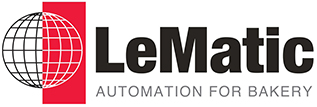
Vision Systems in Commercial Bakeries: Quality Control Made Smarter
In the high-speed world of commercial baking, precision, consistency, and food safety are non-negotiable. As demand for quality products increases, bakeries are under growing pressure to eliminate defects, reduce waste, and maintain tight production timelines. That’s where vision systems come into play.
Industrial vision inspection systems are transforming the way commercial bakeries handle quality control, offering real-time product analysis, intelligent sorting, and seamless integration with automation lines. At LeMatic, we’ve built our AutoEye® vision system to help bakeries not only meet but exceed modern quality assurance standards.
This article explores how vision systems are redefining quality control in commercial bakeries and why adopting this technology is a smart move for long-term efficiency and growth.
What Is a Bakery Vision System?
A vision system in a bakery setting uses high-speed cameras, lighting, and software algorithms to analyze products as they move along the production line. These systems inspect a variety of product attributes, including:
- Size and shape
- Color and surface texture
- Orientation and spacing
- Crust or topping consistency
- Foreign object detection
Advanced systems like AutoEye® can even make decisions in real time—rejecting defective items, triggering alarms, or sending data to other control systems for line adjustments.
Why Quality Control Needs to Be Smarter
Manual inspection can only take a bakery so far. Human error, fatigue, and inconsistent visual judgment limit the accuracy and speed of traditional quality control methods. Meanwhile, defective products that slip through can result in customer complaints, increased returns, or even costly recalls.
Vision systems solve these challenges by providing:
- Real-time inspection at full line speeds
- Consistent and objective product evaluation
- Reduced labor costs and error rates
- Improved compliance with food safety standards
When integrated with automated bakery equipment, vision systems allow bakers to quickly detect issues and take corrective action before they disrupt production or affect product quality.
Key Benefits of Vision Systems in Commercial Bakeries
1. Defect Detection and Rejection
Whether it’s an underbaked bun, a cracked roll, or a misaligned sandwich top, vision systems can identify defects within milliseconds. Advanced rejection mechanisms remove faulty products from the line without disturbing others, ensuring only high-quality items proceed to packaging.
2. Consistent Product Appearance
Brand loyalty in baked goods often comes down to consistent appearance. Vision systems maintain uniformity by rejecting outliers and adjusting operations based on continuous feedback.
3. Production Line Optimization
With real-time data collected during operation, vision systems can be used to adjust upstream processes. For instance, if misshapen products are increasing, operators can tweak dough portioning, baking times, or cutting settings to address the issue.
4. Integration with Data Reporting and IIoT
Modern systems like LeMatic’s AutoEye® integrate with IIoT platforms such as the LeMatic Information Network (Auto iNet) to log quality metrics over time. This helps teams:
- Track OEE (Overall Equipment Effectiveness)
- Analyze trends and recurring issues
- Document quality assurance for regulatory compliance
5. Reduced Waste and Downtime
Identifying problems before they snowball into line stoppages helps bakeries minimize material waste and avoid costly resets or recalls. Preventive maintenance can also be scheduled more effectively based on data collected through vision systems.
Real-World Application: LeMatic’s AutoEye® Vision System
LeMatic’s AutoEye® is engineered specifically for commercial bakery environments. It offers:
- Top-and-bottom inspection
- High-speed operation exceeding 300 products per minute
- Real-time product grading and defect rejection
- Networkable architecture for plant-wide visibility
- Integration with other LeMatic systems, such as AutoOp® robotics, for end-to-end automation
Available in single-lane or multi-lane configurations, AutoEye® gives bakery operators full control over product quality, from the slicer to the packager.
Use Cases in Bakery Environments
| Product Type | Inspection Focus |
|---|---|
| Hamburger Buns | Top scoring, color uniformity, correct hinge slicing |
| Hot Dog Rolls | Shape, length, split alignment |
| English Muffins | Surface texture, placement, size |
| Sandwich Bread Loaves | Slice consistency, alignment, defect detection |
| Specialty Rolls | Topping distribution, visual appeal |
Getting Started with Vision Systems
For bakeries considering the move to vision-based inspection, here are a few tips:
- Audit your current quality control process: Identify where defects or inconsistencies are most common.
- Define key quality parameters: What matters most—size, shape, crust color, or something else?
- Choose a system built for bakery applications: Not all vision systems are created equal. Bakery-specific systems like AutoEye® are tailored to the product types and production speeds of industrial baking.
- Plan for integration: Vision systems work best when integrated with slicing, packaging, and data monitoring platforms.
Final Thoughts
As bakeries scale production and face tighter quality demands, vision systems have become a necessity—not a luxury. They enable smarter, faster decision-making while improving consistency, safety, and operational efficiency.
LeMatic’s AutoEye® is a powerful example of how intelligent automation and real-time inspection can elevate a bakery’s performance. Whether you’re running a single line or managing a full-scale production facility, vision-guided systems offer the insight and control you need to stay competitive.
Contact LeMatic to learn how AutoEye® can be customized for your production line.

